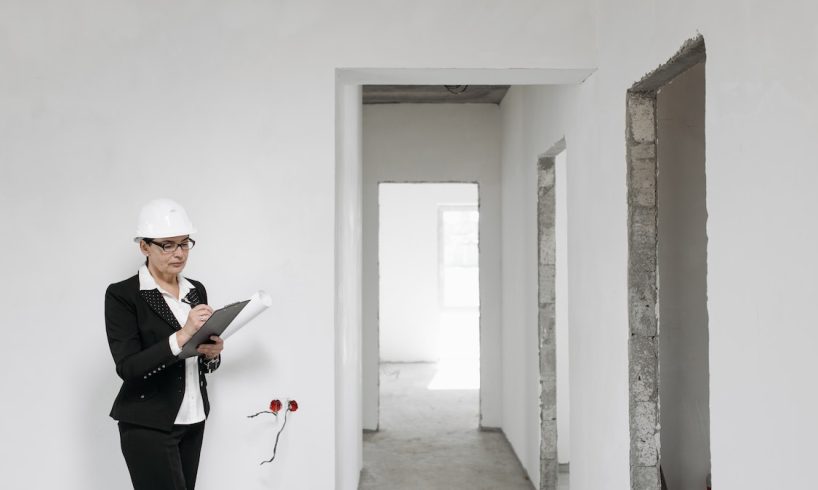
There are many types of materials that you can use to renovate your home. They range from ceramic tile, flooring, insulated windows, and even building materials that have a low environmental impact. It is important to understand the pros and cons of each type before making your final decision. It’s also equally important to choose a skilled contractor for car porch renovation and, generally, house renovation.
Ceramic tiles
If you are looking for the perfect materials for a home renovation, you may want to consider ceramic tile. It can be found in a wide variety of colors and designs. The advantages of using this type of flooring include durability, ease of installation, and low maintenance.
Ceramic tiles have been used as flooring for centuries. They are generally kiln-fired, making them resistant to heat and moisture. However, they are not suited for outdoor applications.
Porcelain tile is more durable than ceramic. They are made from higher-grade clays, and are fired at higher temperatures. A glaze can add an extra degree of protection to the tile.
Unlike natural stone, porcelain is relatively inexpensive. You can buy it in small mosaics or larger, multi-color pieces. These tile types are commonly used in kitchen backsplashes and countertops.
When installing these tiles, be sure to use a cementitious grout. This will make cleaning easier. Sealing the grout regularly will also help keep the tiles looking fresh.
Although they are not the only options for home improvement projects, ceramic and porcelain are well-suited for those who like a modern look. There are a variety of styles to choose from, including subway tile and glass mosaics.
Both ceramic and porcelain are durable, and are less likely to deteriorate than natural stone. They are easy to clean, and they resist mold and mildew.
Both can be used as flooring. However, porcelain has a slightly better water resistance. Tiles are usually used as flooring in high-traffic areas, such as the kitchen and bathroom.
Porcelain tile is usually easier to install than ceramic. Some manufacturers offer a special set of tools for this task. Nevertheless, it can be challenging to complete.
It’s a good idea to take the time to prepare your project for a successful outcome. One mistake can easily ruin the entire job. By taking the time to do your homework, you can make your project a breeze.
Whether you are updating your floor, remodeling your kitchen, or redecorating your entire home, tile can be a great choice. Select functional tiles that will give your space the functionality you are looking for.
Insulated windows
The materials used in your home renovation project can greatly influence the outcome. Not only do you need to pick a material that matches your style, but you also need to choose the right material for your budget. There are several different options for the materials you use, including wood, fiberglass, and vinyl.
Wood is a natural insulator, keeping your home warmer in the winter and cooler in the summer. However, it can be susceptible to damage from insects and moisture. In addition, it can also be stained. This means that it needs sealing to protect it. Also, it can be more expensive than other types of windows.
If you’re looking for a window that will last for decades without major maintenance, consider vinyl. Vinyl can be manufactured into a solid piece, eliminating air pockets. It’s also relatively cheap. You can paint it to match your decor.
Fiberglass is another excellent insulator. It’s also durable and low-maintenance. Aside from being resistant to temperature changes, it also mimics the look of wood.
Aluminum is another affordable and durable option. It’s also flexible, which allows for a sleek, narrow frame. It can be painted almost any color. Although aluminum frames are comparatively inexpensive, it’s important to ensure that they have a thermal barrier between the panes.
Composite windows are a great choice because they combine the durability of other materials with the exceptional insulation value of wood. Composite window frames are made from particleboard, plastic resins, and strand lumber. They’re very stable, and their structural properties are comparable to conventional wood.
Insulated glass windows are also available. These windows have a double or triple pane, which creates an insulating air space. Some have gas between the panes to increase the efficiency of the insulating power. Lastly, there are triple-pane and quadruple-pane options.
When it comes to choosing the best material for your home renovation, you’ll want to be sure to choose a material that is durable, energy-efficient, and attractive. For these reasons, consider the following tips:
Choose a window that is built by a reputable company. Long-standing companies are more likely to provide replacement parts, and they’ll have good reputations.
Flooring

Choosing the right materials for your home renovation is important to making your home look good and function well. In addition to choosing the best materials, you’ll need to consider your budget and the installation process.
The floor is the centerpiece of your home, and you want it to be durable and comfortable. You can choose from a wide variety of materials, including stone, carpet, and tile.
Tiles can be a great choice for kitchens, bathrooms, and entryways. They are resistant to water and are easy to wipe up. They are also great for open-plan living areas.
If you’re working with an architect, he or she can help you choose the flooring that will work best for your home. A few suggestions include hardwood, laminate, and porcelain tiles.
When you choose your flooring, make sure to take into account how much traffic you expect to have in your home. If you have a young family or pets, you’ll need a durable surface.
It’s also worth looking into eco-friendly options. Cork and bamboo are two great options. This material is renewable and hypoallergenic.
Vinyl is also an option. These are a lot more durable than ceramic or linoleum. There are even vinyl planks made to look like all types of woods.
Marble and granite countertops will cost more than other materials. However, they are more durable and will last for many years.
Linoleum is a sustainable product that is made from recycled wood floors. Made from linseed oil, it’s a low-maintenance alternative to hardwood.
Stone and concrete are two other materials to consider. Natural stone conducts heat well, and is durable enough to stand up to heavy wear. Concrete is hard, but not as durable as natural stone.
If you want the benefits of hardwood but don’t want to deal with the maintenance, you may want to look into engineered hardwood. They are more stable and have less movement than regular hardwood.
The best floors are those that blend with your decor. While you should always consider your personal style, there’s no reason to choose a flooring that you don’t like.
Building materials with low environmental impact
If you are looking to renovate your home, choosing building materials that have a low environmental impact is a great idea. They will not only help to reduce your carbon footprint, but they will also save you money on your energy bills.
One of the easiest ways to choose green building materials is to consider the products’ recycled content. Recycling reduces energy consumption and makes the material more sustainable.
In addition to reducing energy costs, recyclable products enhance air quality. Products such as PVC manholes can be made from recycled plastic.
Another building material that has a low environmental impact is bamboo. This plant is naturally biodegradable and grows quickly. Bamboo can be used for flooring, walls and even decorative purposes.
Sheep’s wool is another natural and energy-efficient insulator. Its fibres form millions of tiny air pockets that create a cozy and warm feel in your home. Aside from its energy-efficient properties, sheep’s wool has natural features that can protect your home against insects.
Bamboo is a popular building material for its eco-friendliness. However, it is not entirely eco-friendly unless it is not chemically processed.
Reclaimed wood is a good choice if you want a traditional look. You can find it at salvage yards or retired barns. The downside is that it can be susceptible to insects. But if you have a good source for reclaimed timber, it can be a great way to add value to your home while also reducing your environmental impact.
There are a variety of other options for building materials that have a low environmental impact. Mass timber is a great option because it weighs less than concrete and requires less on-site waste.
Mass timber products include laminated strand lumber, cross-laminated timber, and glue-laminated timber. These are great options for floor, roof, and even accent wall construction.
In addition, rammed earth is a sustainable building material. Unlike other types of building materials, rammed earth is a bio-composite material that is a blend of natural materials such as sand and gravel. Because it is composed of natural materials, it can be strengthened with rebar.







